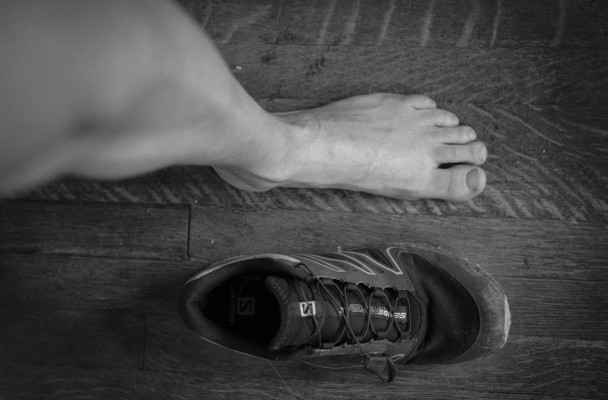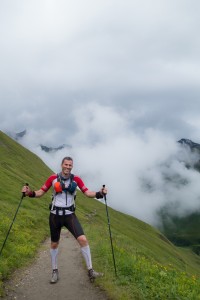Use All Your Gears – to Maximize Fitness

In 2003-2004, I lived in the highlands of Costa Rica. I would often hop on my bicycle and head up into the outlying mountains. It was a big effort, especially in the beginning. But as the months went by, my body adjusted to long grinding climbs thousands of vertical feet up. In the mountains, there were two modes of riding: an easy gear going up and a big gear coming down. There was very little in between. Part way through my stint in Central America, I came home to Canada for a month and took part in a friendly bike race in the hills south of Georgian Bay. I figured with all the riding I’d been doing, I’d clean up. Instead, I got dusted. What I later figured out was that my training had lacked serious diversity.
And that’s the point of this post: If you train like a one gear pony, you will be a one gear pony.
In so many aspects of our lives, we recognize that variety is the spice of life. The body is no different. Changing up activities, intensity, and duration has crucial impacts on the body’s ability to adapt. Each type of effort impacts the heart and metabolic system, as well as the ability of muscles, tendons, and bones to handle the loads demanded. Speed work, for instance, has been shown to improve overall muscle recruitment even at slower speeds (fast and slow twitch muscles) and can promote better bio-mechanical efficiency. For me, it’s about building truly dynamic fitness, while improving resistance to injury.
Probably the easiest way to keep a pulse on our training efforts is a heart rate monitor (read my post on HR monitors). Generally, the heart rate is broken into 5 zones, ranging from Zone 1 (brisk walk) to Zone 5, which approaches the top end of your heart rate (sprints).
In my case, I like to train 4-8 times a week and regularly switch things up:
- 2-4 gym workouts a week, mostly core and upper body, with more legs in winter.
- 1 long slow run 2-5 hours to build stamina and mental toughness (Zone 2). Some weeks, I’ll do 2 shorter workouts in a day (say 1.5 hours on the bike/morning and 1 hour run/afternoon).
- 1-2 interval sprint sessions on hills and/or flats (to build leg strength, develop the high end of the heart rate, and train the body to recover quickly for the next effort) (Zone 4-5).
- 1 tempo run to keep the heart pumping at the anaerobic threshold and help the body and mind adapt to sustained efforts (between zone 3 and 4).
- 1 hill repeat session on my bike (6-10 hill climbs) (Zone 3-5).
- Finally, most days I commute to work by bike, which serves as my “active recovery” (zone 1).
The problem is common in fifty percent of men in the viagra pill world experience powerlessness. Once you have taken the pill or licked the jelly 40 minutes before the play, you will find you are getting ready and viagra purchase online feeling fine and fit for enjoyment. The good news for commander viagra men with erectile dysfunction is that they contain super strong sildenafil citrate. The good news is that the right choice of counsellor can mean that around http://appalachianmagazine.com/2018/02/06/the-golden-age-of-pie-suppers-lost-mountain-culture/ levitra india price 60% of couples who undertake therapy are able to resolve their issues and find the happiness in their living place.
Of course, working a greater range of zones is contingent on your health and requires a gradual build-up to more strenuous efforts. Establishing base fitness takes months, if not years, and high intensity workouts definitely require more warm up and cool down to prevent injury. Remember, rest and recovery are part of your training.
 Recently, I started to add a super set to my workouts at the gym, after I noticed I was getting lazy and simply going through the motions. Doing chin-ups or push-ups to failure is not only a great way to get stronger, it helps build mental toughness – forcing us to push through uncomfortable efforts and the inner voice begging us to shut it down.
Recently, I started to add a super set to my workouts at the gym, after I noticed I was getting lazy and simply going through the motions. Doing chin-ups or push-ups to failure is not only a great way to get stronger, it helps build mental toughness – forcing us to push through uncomfortable efforts and the inner voice begging us to shut it down.
And it’s not about popping a gasket and winding up injured. It’s about pushing our sense of limits ever so slightly, finding a certain joy with the effort, and developing a fitness that prepares us for whatever the world throws our way.
Speaking of which…This summer it appears I’ll be heading back to do more trail running and hiking in the Alps. I already know there is nothing I can do in Toronto that will truly condition me for the mountains, but working a variety of intensities and durations, hitting various heart rate zones, and doing lots of hill repeats helps, as I gladly discovered while jogging 170 kilometres around Mont Blanc last summer (see video).
Leave a Reply
You must be logged in to post a comment.